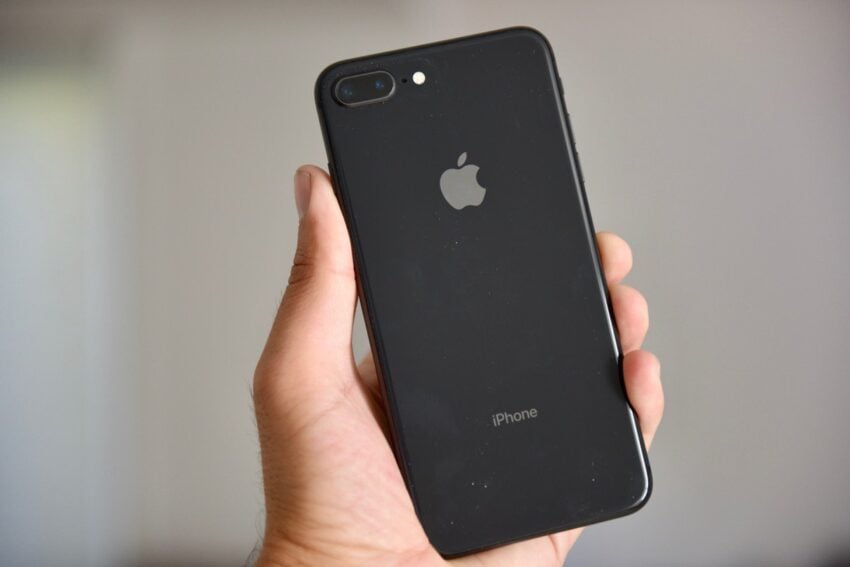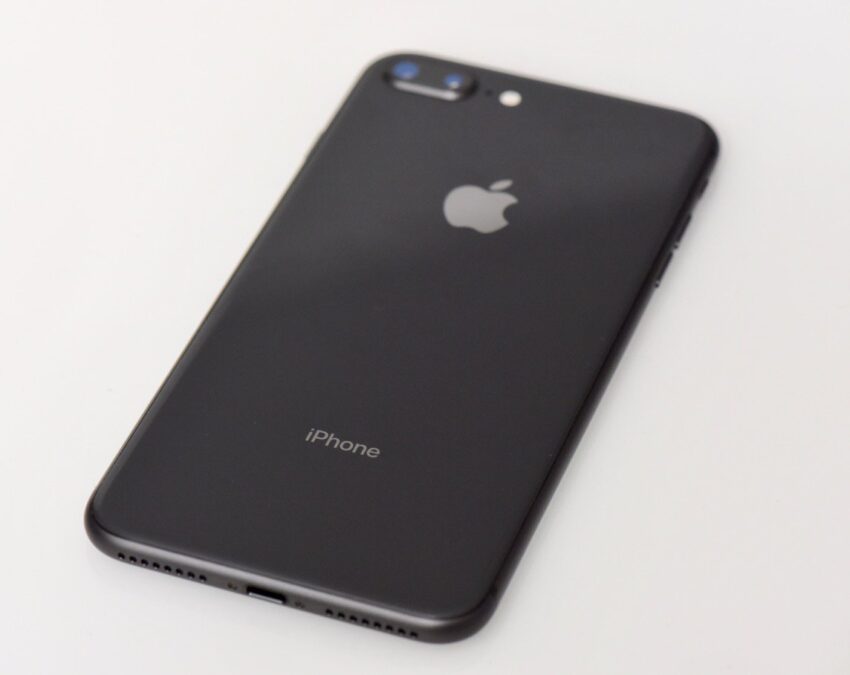Apple
iOS 16.6 Release Date: Tips & Tricks
The iOS 16.6 release date is likely weeks away, but some iPhone users might want to start preparing for the software’s arrival right now.
iOS 16.6 is Apple’s sixth milestone update for its iOS 16 operating system and it should bring a mix of new features and under-the-hood improvements to iPhone.
Apple’s pushed iOS 16.6 into beta testing which means developers, and those enrolled in the company’s public Beta Software Program, can download it right now. The Beta Software Program is free to anyone with a compatible device and Apple ID.
As of right now, we expect the iOS 16.6 release date to land in July given that Apple’s currently on its third version of the iOS 16.6 beta.
Table of Contents
With the iOS 16.6 release date inching closer, it’s time to start preparing for its arrival. In this guide we’ll outline some tips and tricks that will come in handy as we close in on the iOS 16.6 release date for iPhone.
Prepare for the iOS 16.6 Release Date
If you plan on installing the iOS 16.6 update right away, you should use this time to prepare yourself, and your device, for the installation.
iOS 16.6 will likely require a fairly large download. If you don’t have enough storage available on your iPhone, iOS will temporarily remove downloadable parts of applications installed on your phone. This may not be enough and you’ll then be forced to manually delete files.
If you’re running out of internal storage, do some cleanup. Go into your iPhone’s storage and delete files (photos, apps, etc) you no longer need. This will help make room for the firmware. There’s a chance it improves your iPhone’s overall performance as well.
Data loss issues are fairly rare, but you’ll definitely want to err on the side of caution and backup all of your data before you move your iPhone from iOS 15 to iOS 16 or the current version of iOS 16 to iOS 16.6.
If you want to install iOS 16.6 when it arrives, your iPhone will need a solid charge. Make sure your phone has at least a 50% charge or find a charger.
Finally, make sure you have your Apple ID and other logins handy. There’s always a chance the installation logs you out of apps and services so you’ll want to have those on hand so you can get right back to using them.
Get Familiar with iOS 16.6 & Older Updates
You should get familiar with iOS 16.6 before downloading the final release. This way, you won’t be caught off-guard by the changes on board.
We’ve released a guide that will walk you through all of the known changes on board iOS 16.6. Again, the update should bring a mix of new features, bug fixes, and security patches to iPhone users.
We’ve also released a detailed iOS 16 guide that will take you through many of the latest changes on board the current version of the operating system.
Most People Should Avoid the iOS 16.6 Beta
Installing the iOS 16.6 beta on your iPhone might be tempting, but most people should avoid the beta and wait for the stable release.
Beta software helps Apple fix bugs and performance issues before they become major headaches for millions of iPhone users around the world. And while it’s fun to try out new features before they’re released to the public, iOS beta software can be extremely problematic.
The iOS 16.6 beta is causing problems for some testers and you could run into some of the very same issues if you decide to install it on your iPhone.
While you might be able to fix some issues on your own, other bugs and performance issues will require a fix from Apple down the road.
If you rely on your device to get through a day of school or work, you’ll want to stay put on whatever version of iOS your device was currently running.
Monitor Feedback from the iOS 16.6 Beta
Make sure you monitor feedback from iOS 16.6 beta testers as we push toward the official release.
Monitoring feedback will alert you to potential iOS 16.6 problems and it will also reveal the possible benefits of Apple’s new software. More importantly, it might help you decide if you want to install iOS 16.6 right away or wait a little bit for the smoke to clear.
We’ve seen iOS 16.6 beta feedback emerge on sites like YouTube, Twitter, and the MacRumors forums so check those sites if you’re curious about the software’s performance.
iOS 16.6 Release Time
If you’ve owned an iPhone for a long time there’s a good chance you already know this. For those of you who are new to the iPhone and iOS, here’s your PSA.
Apple typically pushes its iOS software updates out in and around 10AM Pacific. That will likely be the case for the final version of iOS 16.6.
We sometimes see iOS updates roll out 5-10 minutes after 10AM so there’s no need to panic if the software doesn’t popup in your iPhone’s Settings app right away.
Here’s what that looks like for other time zones in the United States:
- Eastern – 1 PM
- Central – 12 PM
- Mountain – 11AM
Keep all of this in mind if you plan to install the final version of iOS 16.6 right away.
iOS 16.6 Download Size
We don’t know how big the iOS 16.6 download will be, but you can expect it to be pretty sizable. Milestone upgrades typically require a significant chunk of space.
You can expect long download times, especially right after Apple pushes the software live. The installation process could take quite a bit of time as well.
Once you pull iOS 16.6 from Apple’s servers, you might notice a prompt asking you to “Install” the software right now or “Later.” While most of you will probably want to install it right away, others might benefit from scheduling the installation.
If you do decide to schedule it, you can choose to install it while you’re sleeping or you can have your device remind you to install it at a later date when you’ve got some free time.
If you do decide to install the iOS 16.6 update overnight, you’ll have to plug your iPhone into a power source.
Prepare for iOS 16.6 Problems
iOS 16.6 will go through an extensive beta process, but the final version won’t be perfect. Far from it.
Common iOS problems include abnormal battery drain, Bluetooth issues, Wi-Fi problems, app instability, UI lag, crashes, and Exchange issues.
These problems appear after every single iOS release and there’s a good chance we’ll see them all popup immediately after iOS 16.6’s arrival.
It’ll be difficult to predict what kind of performance you’ll get from iOS 16.6 so you’ll want to make sure you’re prepared to tackle any issues you encounter on day one and beyond.
We’ve released a list of fixes for common iOS 16 problems. If you don’t consider yourself an iOS expert, you’ll want to bookmark those fixes. We’ve also released guides to fixing bad iOS 16 battery life and iOS 16 performance.
You’ll also want to bookmark or follow Apple Support on Twitter and bookmark the Apple Support page on the company’s website. You should also get familiar with Apple’s Discussion forums.
Learn How to Downgrade
If iOS 16.6 starts causing problems on your iPhone, and you can’t seem to fix the issue(s), you may have to downgrade back to older iOS software.
If you already know how to downgrade, you’re good to go. If you aren’t familiar with the downgrade process, you’ll want to get familiar with it right now. This way, you aren’t scrambling if iOS 16.6 starts acting up on your iPhone.
For more on the downgrade process, have a look at our walkthrough.
Keep Your Apps Updated
If you want the best experience, make sure you keep your apps updated as we approach the iOS 16.6 release date.
Once we get close to the official release, developers will start to roll out support updates. These updates will help stabilize the operating system’s performance and help your device make a smooth transition to new software.
Before you download an app update, make sure you read reviews from users. These reviews will alert you to potential benefits and problems with the latest version.
Take Your Time Installing iOS 16.6
iOS 16.6 is an exciting upgrade and some of you might be tempted to install Apple’s new update right when it drops.
For some of you, particularly users dealing with iOS 16 problems, this might be the best decision. That said, some of you will be better off waiting a few hours, a few days or, in some cases, a few weeks before installing iOS 16.6 on your iPhone.
There are plenty of reasons to skip new iOS software updates on day one. For one, they can wreak havoc on your device’s performance.
Avoid iOS 16.6 If You’re Jailbroken
Avoid the iOS 16.6 update, and beta, if you still jailbreak your phone.
Developers have released a new jailbreak that works with iOS 15.0-iOS 16.2. Unfortunately, the jailbreak doesn’t work with iOS 16.6 yet and it’s only compatible with the iPhone X, iPhone 8, and iPhone 8 Plus.
Install iOS 16.5.1 for Better Security | ||||||||||||||||
If security is important to you, think about installing Apple's iOS 16.5.1 update on your iPhone right away. iOS 16.5.1 brings two security patches to iPhone users and they're important if you want to keep your iPhone protected from harm. If you want to learn more, head on over to Apple's website. As for older software, iOS 16.5 brought a ton of security patches to the iPhone. You can find out more about them over on Apple's security site. iOS 16.4.1 included two security upgrades . You can learn more about the pair right here. The company's iOS Security Response 16.4.1 (a) update also included security updates, but Apple hasn't revealed them yet and it's unclear if it will. Apple's iOS 16.4 update had a substantial number of patches on board. You can read about them in detail over on Apple's security site. The iOS 16.3.1 update had three security patches on board including one for an actively exploited vulnerability. For more on the security contents of iOS 16.3.1, check out Apple's security page. iOS 16.3 brought 10+ new security patches with it and you can learn more about all of those right here. In addition, the software came with support for physical security keys for Apple ID. These will beef up your account security by requiring a physical security key as part of the two factor authentication sign in process. Learn more about the change right here. If you skipped iOS 16.2, you'll get its changes with iOS 16.5.1. iOS 16.2 brought a ton of important security patches with it and you can dig into the details on Apple's security site. The update also brought end-to-end encryption to iCloud, iMessage, iPhone backups, Notes, Photos, and more. If you want to learn more about it, head over to Apple's guide. If you decided to missed iOS 16.1.2, you'll get its solitary security patch with your upgrade. Learn more about it right here. If you skipped iOS 16.1.1, you'll get its security patches when you upgrade. You can learn more about them right here. If you missed the iOS 16.1 update, it brought 19 security patches to the iPhone and you can learn about the particulars of those over on Apple's website. If you failed to download iOS 16.0.3, it had one security patch on board, a fix for a potential exploit within the Mail app. For more about the fix, check out Apple's security site. If you're still running iOS 15 your iPhone, you'll get a bunch of other patches when you upgrade. iOS 16.0 brought a ton of security patches to the iPhone. If you're interested in the exact nature of these improvements, you can read about them over on Apple's security website. In addition to those patches, iOS 16 brings some additional enhancements to privacy and security including Safety Check which, according to Apple, will help "people in domestic or intimate partner violence situations review and reset the access they’ve granted others." The feature also resets system privacy permissions for apps and restricts Messages and FaceTime to the device on hand. Apple's also made some improvements to Passkeys in Safari. iOS 16 brings a brand new sign-in method that's end-to-end encrypted and safe from phishing and data leaks. | ||||||||||||||||




















